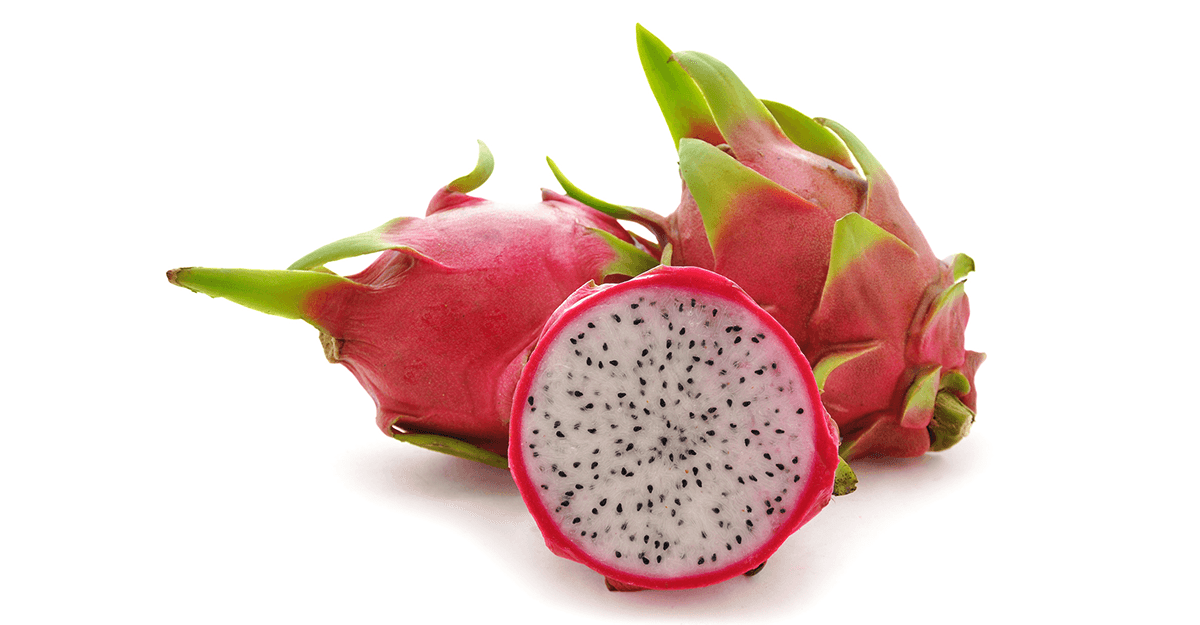(Photo courtesy of World Variety Produce/Melissa's)
Shaped like a fuchsia fireball with swirling green-tipped flaps, the dragon fruit sells itself.
“People think, ‘Wow, what is this thing and how can I not bring it home!’” said Jessie Capote, executive vice president of J&C Tropicals in Miami.
The delicately sweet tropical fruit, which has the texture of a kiwi and is studded with edible black seeds, is quickly going mainstream across the U.S.
“Dragon fruit has been top of mind in every retail conversation we’ve had in the past two years,” said Capote, who distributes Florida fruit between June and November and flies it in from Vietnam and Ecuador. “We did a record volume of 2.5 million pounds last season, and we can’t keep up with the demand.”
Alex Berkley, sales manager at Frieda’s Specialty Produce in Los Alamitos, Calif., said demand for the fruit has grown 40% in volume on average over the last three years, as the Florida crop grows stronger and more countries supply the U.S., including Israel, with its more tropical flavor, and Nicaragua, which provides “much juicer” fruit.
Mark Munger, vice president sales and marketing for Los Angeles-based 4Earth Farms, attributes dragon fruit’s steady sales growth to consumers becoming more adventurous and curious to try new flavors, textures and food experiences.
Because the fruit is harvested ripe and ready to eat, it’s easy for the consumer to choose one, said Marc Holbik, vice president of Ecoripe Tropicals Inc. in Miami.
Pink power
The white dragon fruit, with bright pink skin and crisp white flesh, is the most popular and most abundant of the three varieties available to the U.S., and it adds excitement to fruit salads.
Holbik said the red variety, which has pink skin with smaller, more evenly placed scales and slightly sweeter magenta flesh, is growing in popularity for smoothies and acai bowls.
Not everyone prefers that variety, however.
“Some customers refuse to receive red-fleshed fruit because the purple juice stains their kitchens and bleeds into other fruit,” said Peter Leifermann, vice president sales and marketing at Homestead, Fla.-based Brooks Tropicals.
New kid on the block
There is also the bright yellow, white-fleshed dragon fruit, much of it grown in Ecuador’s Amazon region. The pine-cone-shaped fruit, sweeter and fruiter than its red cousins, was allowed into the U.S. 18 months ago.
“Because the yellow is much newer, it has been slower than anticipated in terms of demand compared to the red,” said Ryan Reilly, sales at HLB Specialties in Pompano Beach, Fla. “But we believe that will change.”
Munger said 4Earth is excited about the yellow variety “not only for its beautiful gold coloring, but for the explosion of sweet tropical flavor that greets the consumer.”
Though dragon fruit has been sold here for more than a decade, Leifermann said the market is still in its adolescent stage.
“Growers, shippers and importers are still fine-tuning best practices and figuring out how to get a return on their relatively large investment,” said Leifermann, who handles Florida varieties.
The wildly exotic fruit can also be a challenge because it ripens in flushes every two to three weeks throughout the season, with each flush harvested over seven to 10 days.
“We have to work closely with retailers to plan ads and promotions and guarantee minimum volume in the off weeks,” said Capote, “so the consumer doesn’t find an empty shelf and think the season has finished.”
When it comes to consumer education, the jury’s out on the value of in-store sampling.
“Sampling in a demo or raw is a great way to get people to try it,” said Robert Schueller, marketing manager for Melissa’s World Produce, Los Angeles.
While Leifermann normally recommends sampling tropical fruit, he said the dragon fruit’s powerful appearance makes it less reliant on sampling than one might think.
Show some skin?
Fresh-cut dragon fruit also has its detractors. Schueller said it’s not well suited to fresh-cut because it goes soft. Berkley said processors and retailers who’ve mixed fresh-cut with berries or pineapple, “don’t see it selling any faster than whole dragon fruit.”
Schueller suggests displaying dragon fruit next to other tropicals that appeal to Asian and South American shoppers, such as mangoes, papaya, passion fruit, cactus pears and coconuts.
As for merchandising, Holbik said the exotic fruit does a great job on its own attracting attention in the produce department, especially when all three varieties are present.
“Cutting a fruit in half and displaying the impressive white or magenta flesh is a good way to increase sales,” he said.
Related
Can a big display sell anything? It can sell dragon fruit

